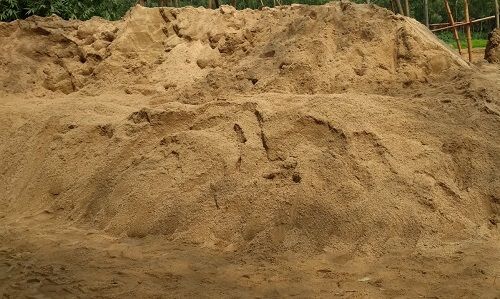Sand is a multi-purpose topographical material. It is known as one of the three fundamental ingredients in concrete. The composition of sand is diverse. Mostly sand is made of silica which is a common element. It can also come from another source of minerals like quartz, limestone, or gypsum. The basic information of sand is discussed in a separate article which you may also like to read: What is sand? Composition, Color, and Types of Sand.
From beds to flood plains to coastlines- we can find the sand at almost everywhere. The robustness of sand has played a significant role in everyday life. We use sand practically every other day.

Uses of Sand
In the real world, there are a lot of situations where we can find uses of sand. Followings are the common sand uses.
- We can use sand to filter water; it works like an abrasive.
- We can use sand to give a grip to our painting or wall art by combining 2 cups of paint with a ¾ cup of sand.
- People make sandpaper by gluing sand to a paper.
- While bunging metal, we can mix sand with clay binder for frameworks used in the foundries.
- Sand can be used for cleaning up oil leak or any spill by dredging sand on that spill. The material will form clumps by soaking up, and we can quickly clean the mess.
- Sand can be used as a road base which is a protective layer underneath all roads
- Industrial sand is used to make glass, as foundry sand and as abrasive sand.
- One creative usage of sand is serving as a candle holder. We can try putting some sand before pouring tea light or any candle in a glass. It holds the candle still and refrain the candle from rolling by giving it an excellent decoration.
- Adds texture and aesthetic appeal to space. {adselite}
- Sand is mostly pure to handle, promptly available and economically wise.
- We can make children’s sandpit to keep the play areas safer. It is quite inexpensive as well.
- We use sand in aquariums, fabricating artificial fringing reefs, and in human-made beaches
- Sandy soils are ideal for growing crops, fruits and vegetables like watermelon, peaches, peanuts, etc.
- Sand can light a path by filling mason jars with sand and tea light which is another inexpensive way to make a walkway glow.
- We can keep a small scuttle of sand near a charcoal grill for inundating flare-ups.
- Sand can be used for cleaning narrow neck receptacle by putting a little sand and warm soapy water in the container.
- We can keep an item steady which needs repairing by using sand. Burying the broken pieces under sand grains helps to hold the elements together while gluing.
- Sand helps to improve resistance (and thus traffic safety) in icy or snowy conditions.
- We need sand in the beaches where tides, storms or any form of preconceived changes to the shoreline crumble the first sand.
- Sand containing silica is used for making glass in the automobile and food industry- even household products for the kitchen.
- Sand is a strong strand which is used for plaster, mortar, concrete, and asphalt.
- The usual bricks formulated of clay only is way weaker and lesser in weight than blocks made of clay mixed with sand
Sand Articles
- What is sand? Composition, Color, and Types of Sand
- Uses of sand
- What is Sandy Soil?- Uses of Sandy Soil
- How to Improve Sandy Soil
- What is the Bulking of Sand? - Significance & Test Steps
- What is Silica Sand? Sources & Uses of Silica Sand
- Types of Silica Sand
- The Health Risks of Silica Sand
- Bulk Density of Sand
- Specific Gravity of Sand
- Sand Unit Weight

